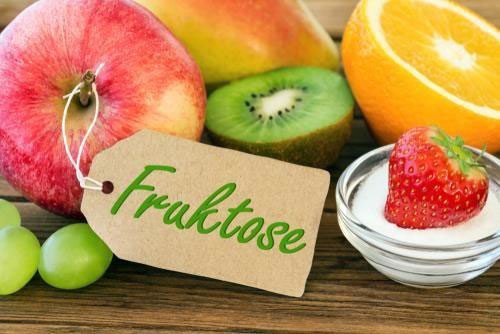
Fructose intolerance: When fructose becomes a problem
Diarrhoea, abdominal pain, general malaise after a fruit meal? What could it be? You have already been to the doctor and he finds nothing? You may be suffering from fructose intolerance. More and more people are affected by it. An estimated 40 percent of people from industrialised countries are said to have at least limited fructose absorption capacity. Nevertheless, this restriction is often not recognised. Those affected therefore often suffer from constant digestive problems and pain for many years
.Diagnosis of fructose intolerance
If you suffer from indigestion and abdominal pain after eating fruit, talk to your doctor. He or she can do a simple test to find out if you are fructose intolerant. This way you can be sure!
What is fructose and where do we find it?
Fructose is fruit sugar and is mainly found in fruit and honey. It also occurs naturally in most plants and in foods in which fruit has been processed. It belongs to the group of carbohydrates and is classified as a so-called simple sugar. This type of sugar can occur alone or in combination with other sugars. An example of this is normal household sugar (sucrose), which is made up of one molecule each of fructose and glucose (dextrose).
Fruit, as well as jams, fruit yoghurts or smoothies, contain a lot of fructose and can cause symptoms. Even in light products it is often used as a sweetener. What many people do not know: As already mentioned, 50 per cent of commercial household sugar consists of fructose. Unfortunately, hidden sugar can also be found in convenience foods and various sausages. Anyone who wants to avoid sugar should therefore always check the ingredients list of the individual product. This can usually be found on the back of the product. If ingredients ending in -ose are listed here, it is sugar. However, various types of syrup and carbon hydrates, such as maltodextrin, also contain sugar.
Intolerance is innate
Fructose intolerance can be roughly divided into two categories. On the one hand, there is the hereditary form, which already occurs in infancy or toddlerhood, and on the other hand, the intestinal variant, which often only becomes noticeable in the course of life. In the case of hereditary fructose intolerance (HFI), a strict diet is necessary, whereas in the intestinal form (IF), small amounts of fructose can be absorbed by the body. The latter is therefore often referred to as fructose malabsorption, in distinction from severe intolerance.
In HFI there is a metabolic disorder, in IF an absorption disorder. The body is unable to absorb the fructose into the organism.
The correct diagnosis is very important!
If a fructose intolerance is not recognised, this can have serious consequences in the long term. The physical symptoms can also affect the psyche. If an intolerance is not recognised and treated appropriately, further intolerances can occur, putting even more strain on the digestive system. In addition, damage to the intestinal mucosa can occur. Finally, the damaged intestinal flora can lead to a weakening of the immune system, which in turn leads to an increased susceptibility to infections.
In the case of hereditary fructose intolerance, the consequences are even more serious: Due to an enzyme deficiency, the intake of fructose leads to an accumulation of fructose-1- phosphate in the body, which has a toxic effect in larger quantities and can lead to hypoglycaemia, liver changes, clotting disorders and shock.
If you suspect it, see your doctor!
Fructose intolerance is often accompanied by other intolerances. Therefore, if fructose intolerance is suspected, other intolerances should also be tested for. Fructose intolerance can be diagnosed with a simple breath test. For this purpose, the patient consumes a fructose solution on an empty stomach. The hydrogen content of the breath is then measured at regular intervals. These values are compared with the original value before the test. The evaluation allows the doctor to determine or exclude an intolerance.
Recipe – Low-fructose fruit salad
For people who only have a mild intolerance, the following recipe is suitable
.Recipe:
Ingredients:
- 50 g raspberries
- 1 peach
- 1 apricot
- Rice syrup
- 5 thyme sprigs
Preparation:
- Remove thyme leaves from stems and place in a bowl .
- Afterwards, cut the peach and apricot into small pieces and add these together with the raspberries.
- Add the raspberries .
- Mix the fruit with the thyme.
- Now sweeten the fruit salad with the rice syrup to taste.
Tip: To allow the aroma of the thyme to develop particularly well, let the fruit salad steep for about 10 minutes.
Good appetite!


